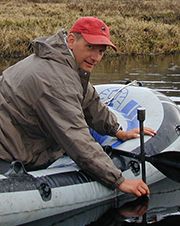Taking the Power of Exploration Geophysics from the Oil Patch to Help Solve the World’s Grand Challenges
OR
SEG members, view the course for free!
Format: Virtual Webinar. 45 min. presentation followed by 15 min. Q&A
Please note that two sessions will be given at different dates listed below.
Session 1, Thursday, April 29, 2021, 11 am to 12 pm US Central Time
Session 2, Wednesday, October 13, 2021, 10 am to 11 am Beijing Time
Two live sessions are completed. Please scroll down to watch the videos from the recordings below. SEG members, view the course for free!
Abstract:
Geophysicists have an opportunity to utilize the most powerful computation, signal processing, and imaging tools developed in exploration geophysics and apply them to help solve several of society’s grand challenges. Over the past 20 years, our group has focused on subsurface imaging research to help address challenges in groundwater resources and to better understand the earth’s cryosphere. In particular, we have focused on marrying the tools of oil and gas exploration with imaging problems relevant to environmental geophysics. This talk will draw on this large body of work to explore how the geophysics profession can contribute solutions to society’s pressing problems. The discussion will be interwoven with an exploration of how we may better communicate what we do and how we may develop the next generation of geophysical leaders.

Bottom-of-sea-ice image from an Arctic oil spill detection experiment
Your Instructor

John Bradford received dual BS degrees in Physics and Engineering Physics with a concentration in Chemical Engineering from the University of Kansas in 1994. He received his PhD in Geophysics from Rice University in 1999. In 2001, he joined the Center for Geophysical Investigation of the Shallow Subsurface at Boise State University where he served as director from 2006–2009. In 2017, he moved to the Colorado School of Mines where he served as the Geophysics Department Head until 2019, Vice Provost and Dean from 2019–2020, and is currently Vice President for Global Initiatives and heads the Office of Global Initiatives and Business Development. He remains active in research and is focused on developing methodologies for quantitative analysis of near-surface seismic and ground-penetrating radar data with emphasis on using these tools to solve interdisciplinary science and engineering problems. He has published on a diverse array of topics that include hydrocarbon detection as both resource and environmental contaminant, geothermal characterization, hydrogeophysics, glaciology, and archaeology. In 2015/2016 he served as the President of the Society of Exploration Geophysicists.
